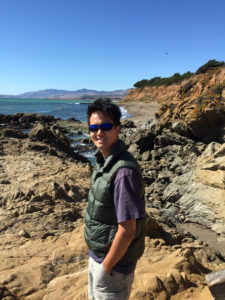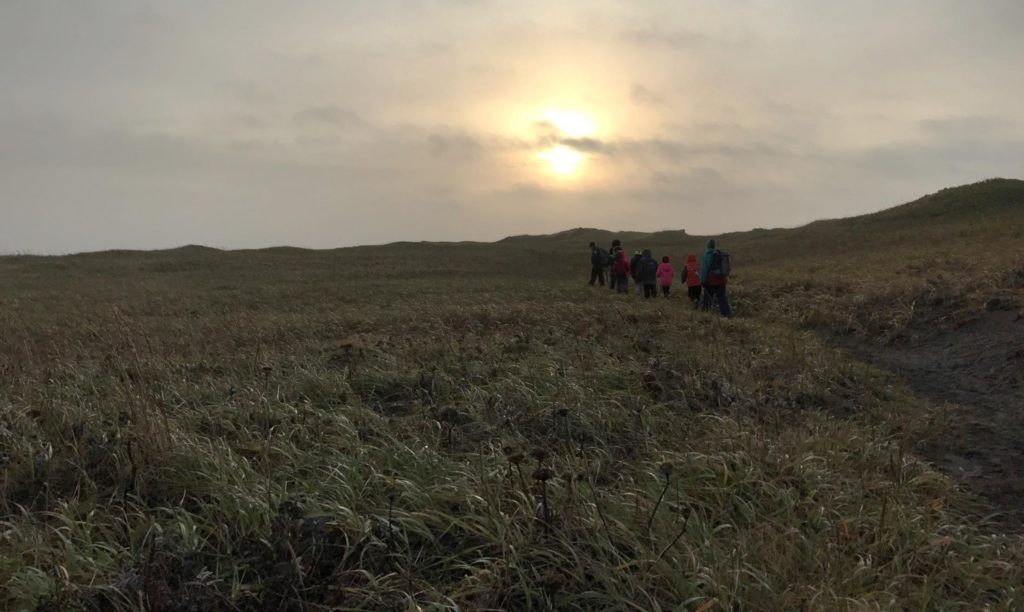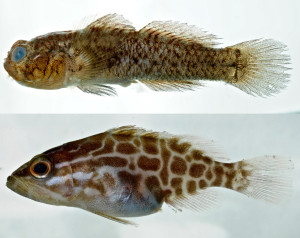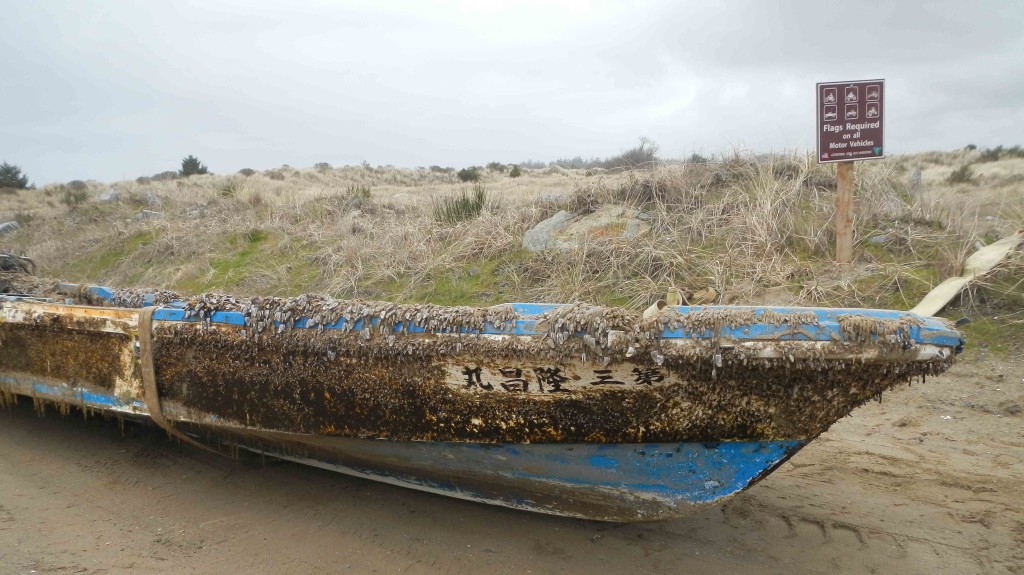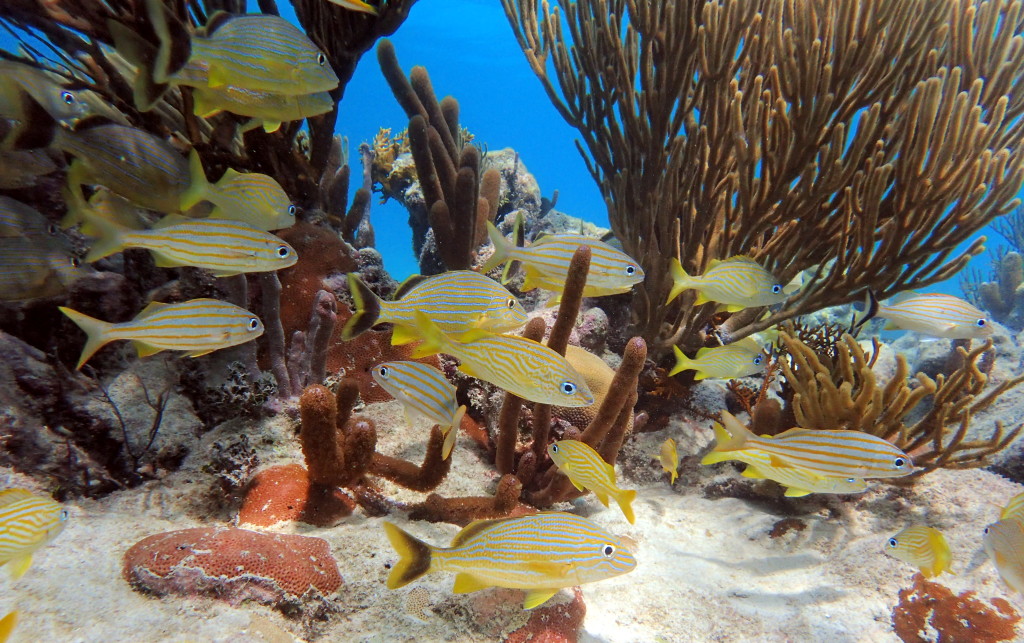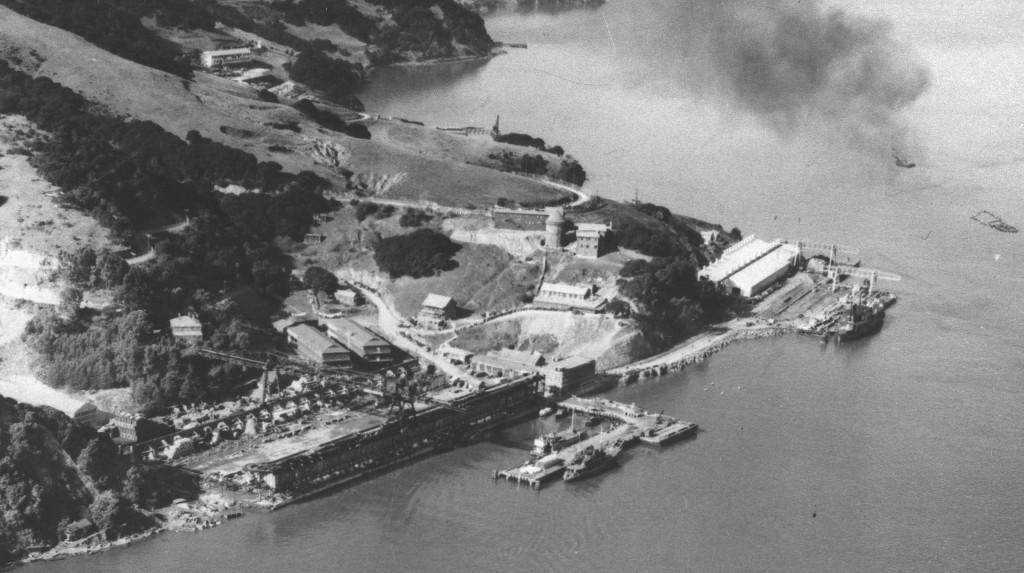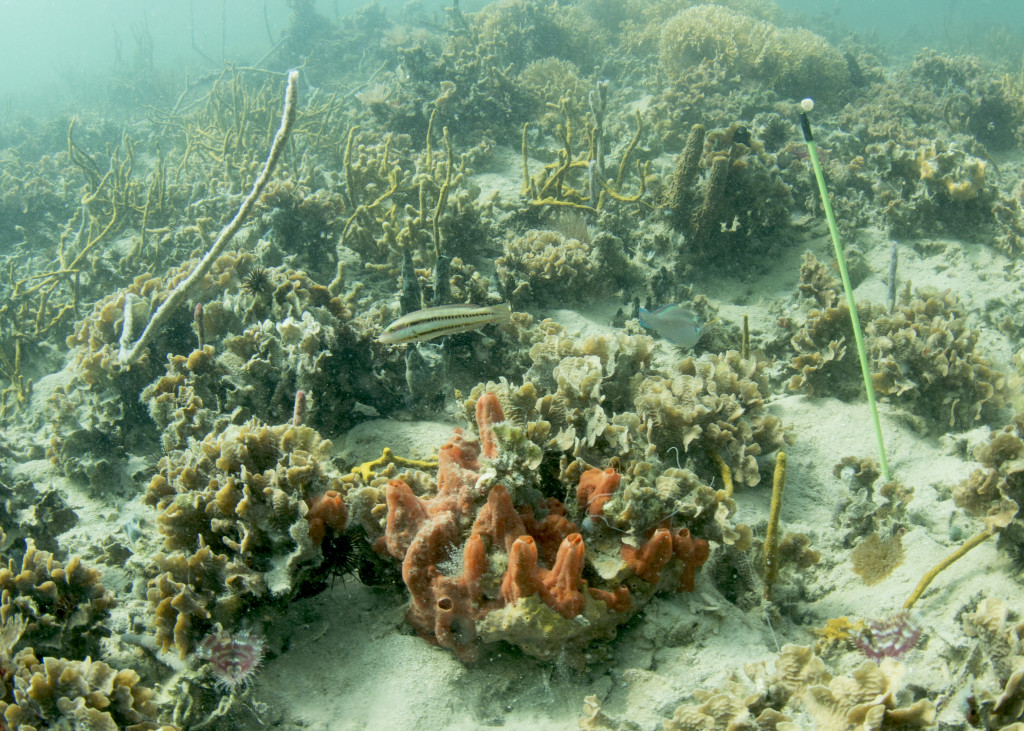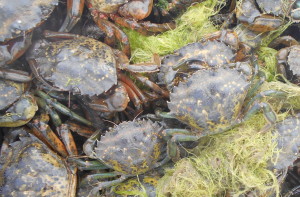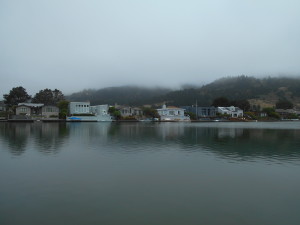by Ryan Greene, science writing intern
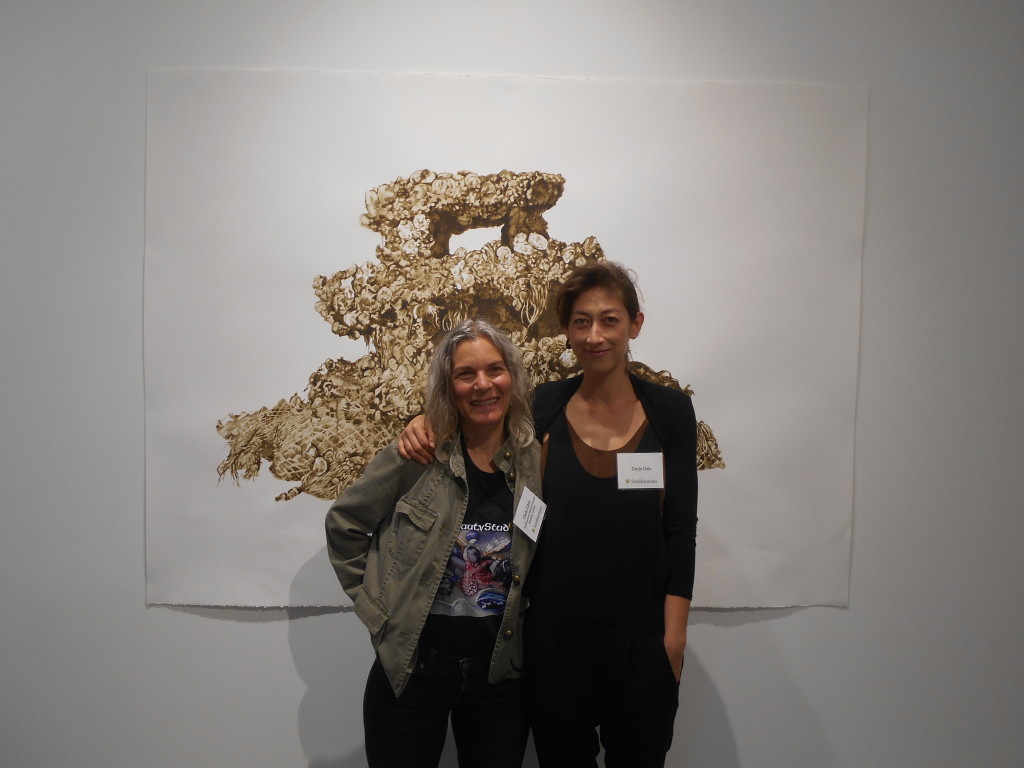
SERC ecologist Chela Zabin (left) with artist Tanja Geis (right) at Geis’ exhibit at the Embark Gallery in San Francisco on July 17, 2017. They are standing in front of Geis’ piece “Layer Cake,” a drawing of an experimental native oyster restoration reef painted using pigment from the mud in San Francisco Bay. Credit: Ryan Greene/SERC
This summer, Oakland-based artist Tanja Geis teamed up with Smithsonian researchers for her multimedia exhibition, ‘Lurid Ecologies: Ways of Seeing the Bay‘ at the Embark Gallery in San Francisco. Born out of a collaboration with scientists at the Smithsonian Environmental Research Center’s Tiburon laboratory, ‘Lurid Ecologies’ explores efforts to restore the Bay’s only native oyster, Ostrea lurida. Geis works at the intersection of visual art and ecology. Her exhibit at the Embark Gallery includes oneiric drawings made with pigment from the Bay’s mud, a 3-channel video installation, and assemblages of tools used to study marine life. This exhibit will be free and open to the public until August 19 at the Embark Gallery in Fort Mason’s Center for Arts & Culture.
To learn more about Geis and her exhibit, check out this interview (edited for clarity and brevity).
***
When did you start making art, and why?
My mom is a fashion designer and she went to art school, and so she’s always encouraged me to make art. So, in a sense, I’ve always been making art. But I think maybe the more relevant answer is that I started taking art really seriously about five years ago. It was at that point that I realized that it was pretty much the only thing that was going to check all the boxes for me.
For the past couple months, you’ve been working alongside SERC ecologists in San Francisco Bay. Can you talk a bit about your interest in ecology and how your collaboration with SERC scientists has shaped your recent exhibit?
I’ve always been interested in the nonhuman living world ever since I’ve been a kid. I guess I’m always curious about how these little behavioral differences come together and create a functional ecology. And I’ve always had this parallel interest in biology….I’m very interested in how we conceptualize all these complex interactions that we’re calling ecology….
What surprised me most was how often things don’t go as planned. There are many dead-end experiments, and it really requires this kind of dogged will and tenacity to discover new things, new patterns, new behaviors. I think that’s something that a lot of people don’t get to see.
We have this idea of scientists in white lab coats with shiny new equipment working under fluorescent lights constantly having these new discoveries. And that’s really not the case. Ecological research is messy, it’s muddy, it’s full of things you can’t control.
Click to continue »
